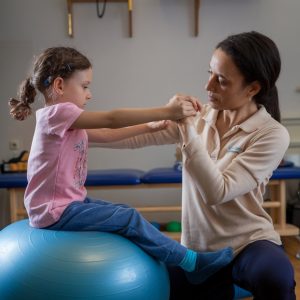Seeing your child shy away from everyday activities after an injury can feel daunting. Many parents across the UK worry when once-active youngsters suddenly become reluctant to stand, walk, or even play. At PT Kids, we recognise that children’s recovery is not just about physical healing—it’s also about rebuilding confidence and emotional wellbeing. By providing nurturing paediatric physiotherapy and occupational therapy, we help children regain comfort and independence in a safe, caring environment.
Investing in professional support at an early stage is invaluable for a child’s recovery after injury. Gentle therapy approaches encourage children to move freely again, minimising any lingering worries or discomfort. Parents often overlook the psychological barriers to recovery, such as fears of feeling pain or re-injury. That’s where understanding how to help children overcome fears can make all the difference—taking small steps to foster lasting progress.
Understanding Fear-Avoidance and Movement Confidence
When a child is injured, discomfort can create a strong memory. This often leads to the fear-avoidance model of pain, where a child becomes anxious about re-injury or aggravating existing pain. In practice, this mindset can trigger avoidance behaviour in physiotherapy sessions and day-to-day activities. Our team at PT Kids focuses on helping children feel safe, guiding them to rebuild trust in their movements and prepare for an active life ahead.
Building confidence in kids starts by addressing their anxieties head-on. Talking to kids about their fears is crucial: parents can reassure them that twinges and aches are part of healing, not a sign of permanent damage. By normalising discomfort, children learn to interpret sensations differently. Self-regulation skills in children also improve when they are taught calming techniques, such as slow breathing or visualising fun scenarios, to ease tension before an activity.
When to Start Physiotherapy After Injury
Many UK families wonder when to start physiotherapy after injury, especially if their child wants to rest more than usual. Early intervention is often key: a structured physiotherapy programme gently reintroduces movement and reduces the risk of developing long-term aversions. Waiting too long can make children more guarded about activities, impacting their physical progress. PT Kids prioritises a tailored approach, ensuring therapy aligns with each child’s unique stage of recovery.
Professional guidance helps children gradually rebuild muscle strength and mobility while addressing psychological setbacks. Pain education and movement confidence go hand in hand: once children understand that guided return to physical activity is safe and beneficial, they typically feel more at ease. Gentle exercises after injury for children—like stretches, light balancing, or playful obstacle courses—reduce stiffness and boost morale, encouraging steady improvements in each therapy session.

Practical Techniques to Overcome Fear After Injury
Parents seeking ways to overcome fear after injury should explore approaches that blend physical rehab with emotional support. Child psychologist advice for parents often emphasises breaking larger movements into smaller, achievable steps. For example, if a child resists putting weight on an injured leg, start with seated leg lifts or gentle floor exercises. By celebrating each accomplishment, children experience a sense of triumph that gradually diminishes their fear.
Teaching kids emotional resilience involves coping techniques for fearful children. Encourage little ones to tune into their bodies rather than shy away. In physiotherapy, we might introduce playful activities—like tossing and catching a light ball—to improve coordination while subtly boosting self-belief. At home, a calming bedtime routine can reinforce safety and stability, helping children wake up feeling more secure in their ability to move. These consistent habits build a foundation for future success.
Creating a Supportive Home Environment
Nurturing an encouraging home environment reinforces therapeutic gains. Consistent positivity—praising effort over results—motivates children to keep trying, even if progress is slow. Helping children feel safe could be as simple as always being present when they attempt new activities, offering a calming hand on their shoulder, or discussing any lingering worries. Over time, children begin to self-soothe, drawing on confidence built during physiotherapy or occupational therapy sessions.
It also helps to use practical aids: for instance, non-slip mats can help a child feel more secure climbing in and out of the bath. If your child experiences stress around big steps outside, practice on smaller stairs indoors first. Subtle adjustments like these ease psychological barriers without over-challenging youngsters. By meeting children where they are, movement no longer feels intimidating. Instead, they experience steady improvement and pride in their achievements.
Working with PT Kids for Ongoing Support
At PT Kids, our priority is ensuring every child’s road to recovery feels manageable and positive. Our paediatric experts are trained to spot subtle signs of worry or discomfort, adapting therapy sessions accordingly. We support families through regular progress checks, collaborative goal-setting, and gentle encouragement that respects each child’s emotional state. This client-centred method ensures your child’s comfort and confidence remain at the forefront, guiding them to move freely without lingering fears.
Providing personalised care can help children adopt new movement patterns in gradual steps, embracing daily activities one milestone at a time. Our approach at PT Kids merges self-awareness, emotional security, and proven therapeutic techniques. Every child deserves a comprehensive plan that acknowledges their individual fears, fosters self-regulation skills, and bolsters self-esteem. By blending physiotherapy, occupational therapy, and family support, we equip children and parents to face recovery challenges together.

Conclusion
Supporting children after they’ve experienced an injury involves more than just physical healing—it’s about restoring faith in their ability to move. With professional physiotherapy and occupational therapy, UK families can see marked improvements in mobility, independence, and confidence. Whether your child is recovering from injury or managing conditions such as joint hypermobility, our team focuses on promoting stability and long-term strength. Whether you’re exploring gentle exercises or seeking guidance on emotional resilience, the team at PT Kids is here to help. By providing personalised strategies, we encourage smoother child recovery after injury, helping little ones rediscover freedom and joy in movement. Book your first consultation and start your path to improved wellbeing.




